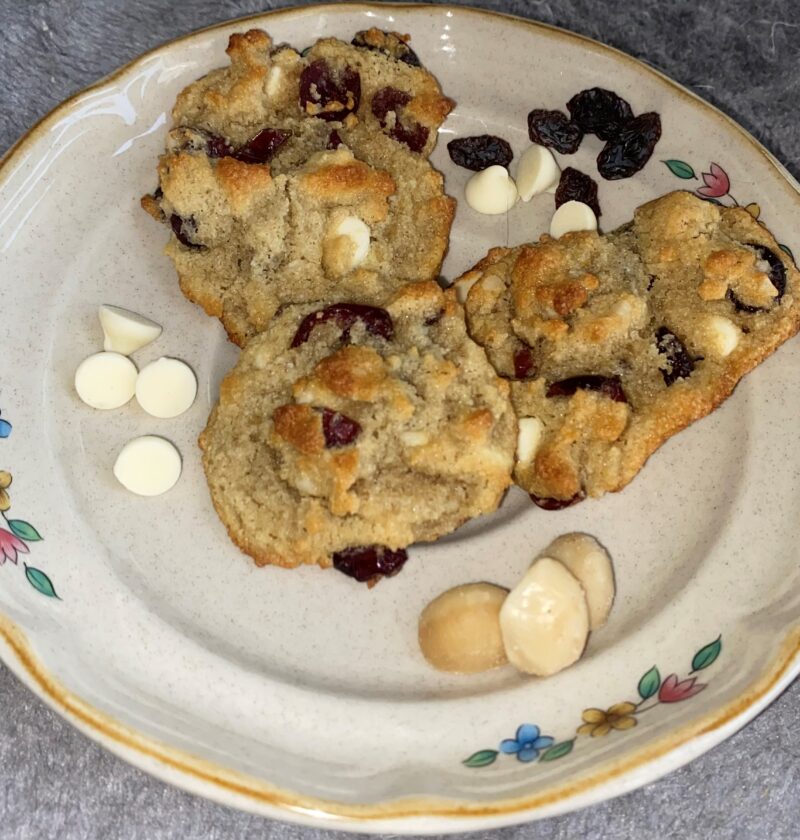
These gluten-free favorites are meant to be chewy, light, airy cookies that constantly leave you wanting more. How are these qualities achieved you may ask? Well, through science! The defining characteristics of these are due to the scientific structure of the ingredients, the order of the ingredients in the recipe, and even the amount of heat supplied to the cookies in the oven. All of these and more are covered below to help you get a better understanding of the baked good you love. Don’t forget that even the simplest of foods always have a scientific reaction taking place to achieve the finished product.
Contrary to popular belief, there is a lot of chemistry involved in baking. Temperatures used, methods of providing heat, and even the way ingredients are mixed are all a part of the complex science that goes into the recipe. Click here to learn more about what goes on behind the scenes in making these cookies.
Though eggs are typically essential to any baked good recipe, I was interested to see how substituting the egg would affect the outcome of the cookies. After some research, I found that carbonated water could supposedly act as an egg in certain recipes, so I tried it out. As you probably guessed it, I also delved into the science to see what was happening when I used carbonated water as a binder and leavening agent. Click here to learn more about the research behind carbonated water and the effects of the substitution.
Ingredients
-
Cranberry Preparation
- Cookie Preparation
- Cookie Creation
Instructions
-
Cranberry Preparation
-
Add 1 cup of dried, unsweetened cranberries to 1 cup of boiling water (on high heat).
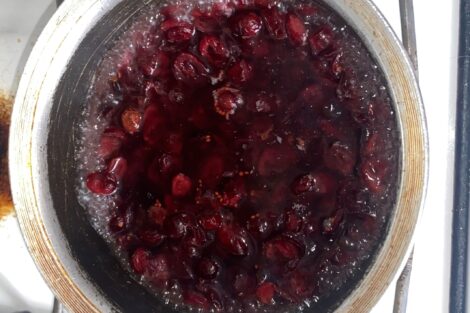
- Add ½ cup of white sugar to boiling water and let stand for an hour prior to use, stirring the mixture occasionally.
-
In a large mixing bowl, blend together butter, brown sugar, and white sugar together until smooth.
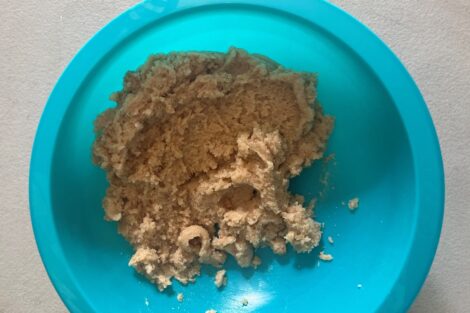 Procedure
Procedure
- Preheat oven to 375°F.
-
Line the cookie sheets with parchment paper.
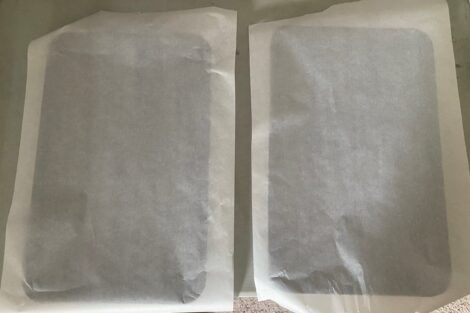
-
Beat in the egg and vanilla extract to the sugar mixture.
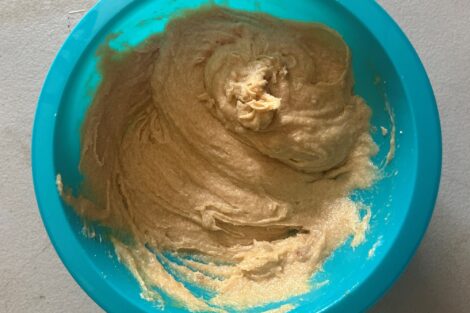
-
Combine the flours and baking soda into medium mixing bowl. Slowly add this to the sugar mixture until smooth.
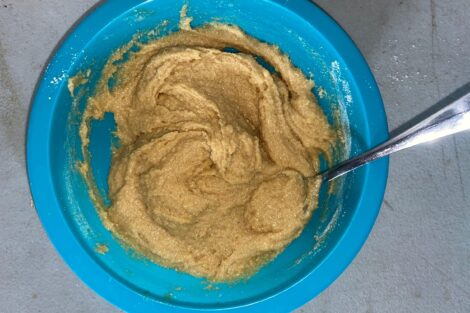
-
Add the drained cranberries, white chocolate chips, and macadamia nuts into the smoothened dough.
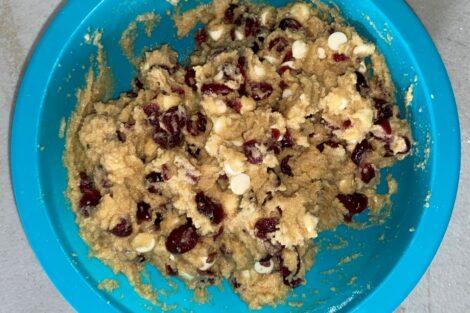
-
Roll dough into 1″ balls and place on cookie sheet about 2″ apart.
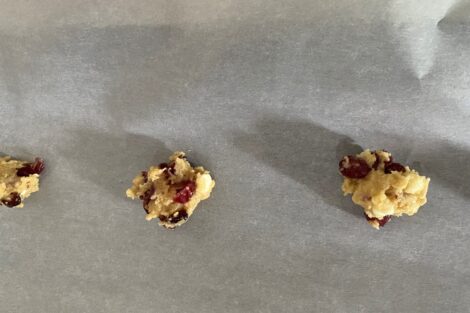
-
Using your fingers, slightly flatten the top of each rolled cookie.
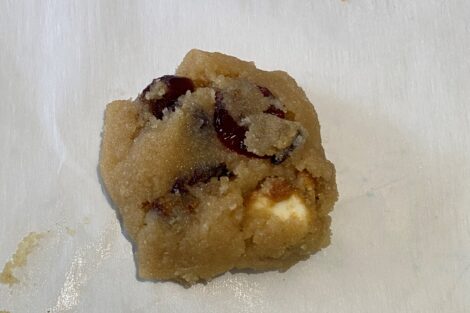
-
Bake for roughly 6-8 minutes or until bottom is golden brown (Note: cookie may look unfinished, but it is).
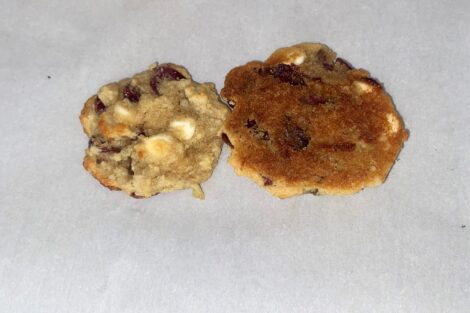
-
Allow cookies to cool for 2 minutes on cookie sheet(s) before gently moving them to a cooling rack.
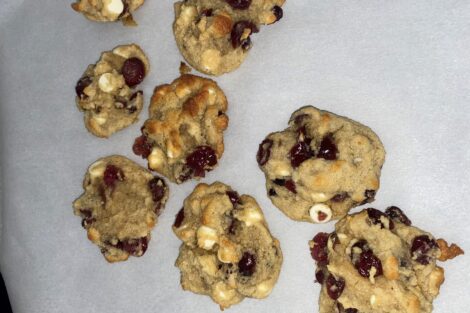
-
After moving, allow cookies to finish cooling for 30 minutes or until cookies fully set.
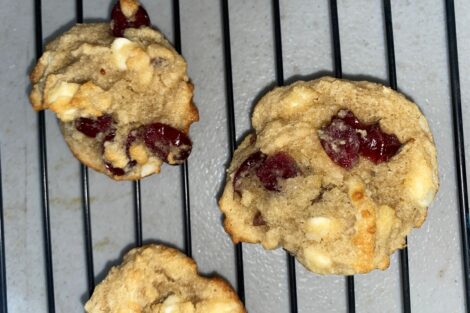
Notes
Recipe was originally adapted from: THANK U BERRY MUNCH COOKIES | YOUR LIGHTER SIDE
Featured Image by: Alexis Jefferson, April 24, 2022, Middletown, PA 17057
Instruction Images by: Alexis Jefferson, April 24, 2022, Middletown, PA 17057
Scientific Investigation
- Harris, R. Rise and Bind: Substituting binders and flours in pancakes. https://teachers.yale.edu/curriculum/viewer/initiative_17.04.06_u (accessed May 4, 2022).
- Geiger, M. Meet the Flours – Alternative Flours. Iowa State University Extension and Outreach. https://blogs.extension.iastate.edu/answerline/2021/12/07/meet-the-flours-alternative-flours/ (accessed May 4, 2022).
- See reference 2
- See reference 2
- Gardiner, A.; Wilson, S. Science of Cooking: The Amazing Multi-Tasking Egg. https://www.exploratorium.edu/cooking/icooks/article_5- 03.html?msclkid=3a6839dabc3b11ec8cd1a18c3d78c1d4 (accessed May 4, 2022).
- Lawandi, J. What’s So Special About 350oF? https://www.thekitchn.com/whats-so-special-about-350-f-food-science-217960 (accessed 2022 -05 -04).
Substitution Analysis
- Berg, F. The Best Egg Substitutes for Baking and Cooking.
https://www.foodnetwork.com/how-to/packages/food-network-essentials/the-best-eggsubstitutes-for-baking-and-cooking (accessed 2022 -04 -10). - Rentschler, K. From the Center of the Earth, the Mighty Bubble.
https://www.nytimes.com/2002/03/20/dining/from-the-center-of-the-earth-the-mightybubble.html?msclkid=2641ba78bc4611eca61e3ca0605dc827 (accessed 2022 -04 -14).